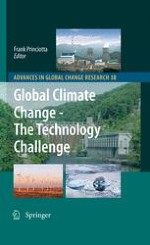2011 | OriginalPaper | Chapter
7. Buildings: Mitigation Opportunities with a Focus on Health Implications
Authors : Robert Thompson, James Jetter, David Marr, Clyde Owens
Published in: Global Climate Change - The Technology Challenge
Publisher: Springer Netherlands
Activate our intelligent search to find suitable subject content or patents.
Select sections of text to find matching patents with Artificial Intelligence. powered by
Select sections of text to find additional relevant content using AI-assisted search. powered by
